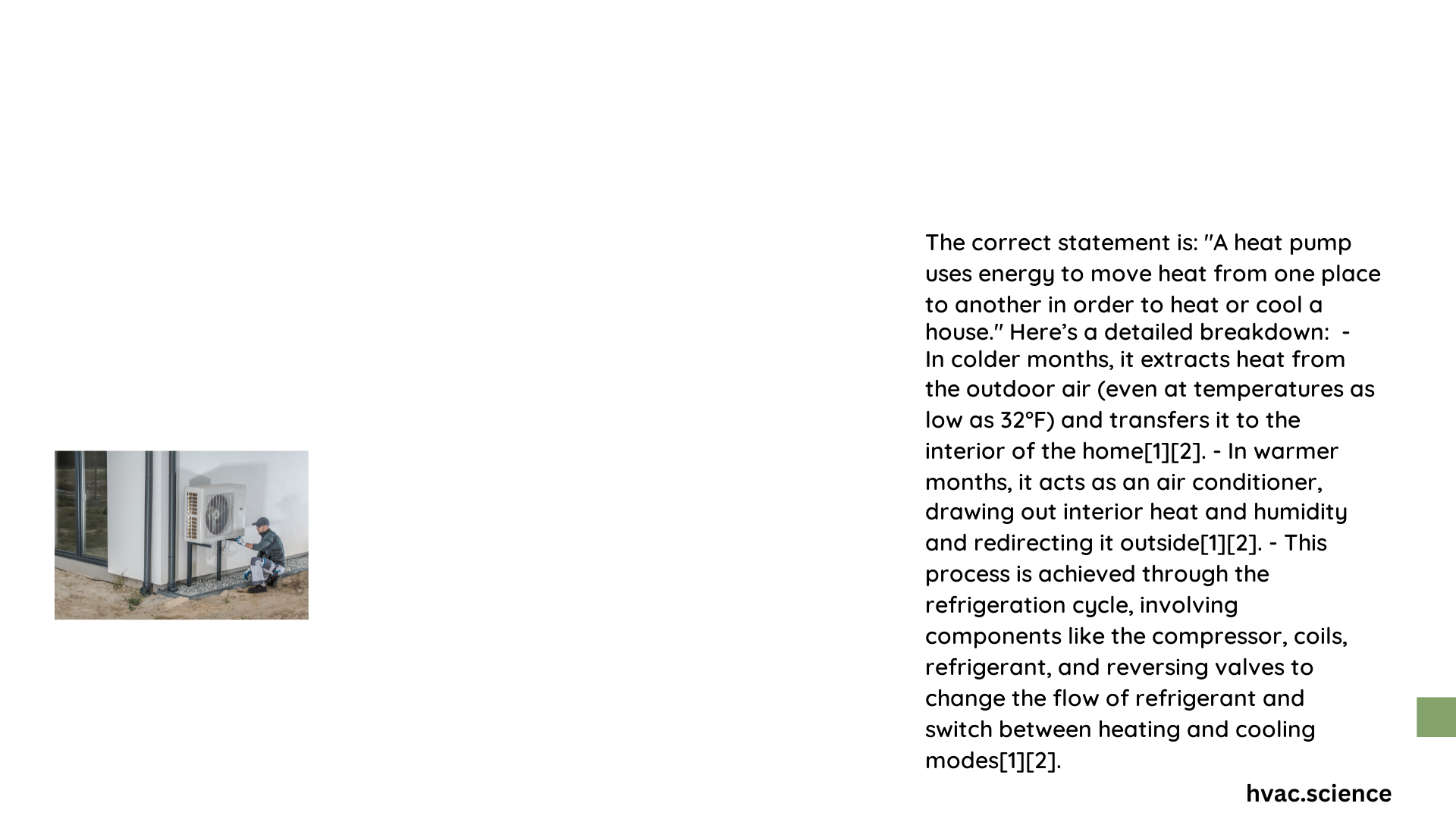Heat pumps represent an innovative energy transfer technology that moves thermal energy from one location to another, effectively heating or cooling a house by extracting heat from external sources like air, ground, or water and transferring it indoors or outdoors depending on seasonal requirements. This sophisticated system operates through a refrigeration cycle that enables remarkable energy efficiency and versatile temperature control for residential environments.
What Makes a Heat Pump Unique in Home Temperature Management?
Heat pumps distinguish themselves from traditional heating and cooling systems through their ability to transfer heat rather than generate it directly. Unlike furnaces that burn fuel to create heat, heat pumps move existing thermal energy, making them significantly more energy-efficient.
How Does a Heat Pump Extract Heat?
A heat pump functions by utilizing a refrigerant that circulates through a closed system, absorbing and releasing heat through phase changes. The key components involved in this process include:
- Evaporator: Absorbs heat from the external environment
- Compressor: Increases refrigerant pressure and temperature
- Condenser: Releases absorbed heat into the desired space
- Expansion Valve: Reduces refrigerant pressure, enabling heat transfer
What Are the Primary Operating Modes?
Heat pumps can operate in two primary modes:
- Heating Mode
- Extracts heat from outside air, ground, or water
- Transfers heat inside the house
-
Maintains indoor warmth during cold seasons
-
Cooling Mode
- Removes heat from indoor spaces
- Transfers heat outside
- Provides cooling during warm seasons
What Performance Metrics Define Heat Pump Efficiency?

| Metric | Description | Typical Range |
|---|---|---|
| COP (Coefficient of Performance) | Ratio of heat transferred to work input | 2 to 4 |
| SEER (Seasonal Energy Efficiency Ratio) | Cooling efficiency over an entire season | 14 to 25 |
What Factors Impact Heat Pump Performance?
Several critical factors influence heat pump effectiveness:
- External Temperature: Performance varies with ambient conditions
- Refrigerant Quality: Modern refrigerants enhance efficiency
- System Design: Air-source vs. ground-source configurations
- Installation Quality: Proper sizing and professional installation
What Are the Economic Considerations?
Heat pump installation involves:
– Initial costs ranging from $3,000 to $30,000
– Potential energy savings of 30-60% compared to traditional systems
– Lifespan of 15-25 years with proper maintenance
What Environmental Benefits Exist?
- Reduced carbon emissions
- Lower energy consumption
- Minimal direct greenhouse gas production
- Potential integration with renewable energy sources
Conclusion: Comprehensive Heat Transfer Solution
The statement that most accurately describes a heat pump’s function is: A heat pump is an energy-efficient device that transfers thermal energy from one location to another, providing both heating and cooling capabilities by moving heat rather than generating it directly.
Technical Precision
Heat pumps leverage thermodynamic principles to move heat against its natural gradient, requiring minimal electrical input to achieve significant temperature modifications in residential environments.
Reference:
– Heat Pump Fundamentals – Energy.gov
– ASHRAE Heat Pump Guidelines
– International Energy Agency Heat Pump Reports
